-
 Bitcoin
Bitcoin $106,077.7663
-2.62% -
 Ethereum
Ethereum $2,644.4634
-6.15% -
 Tether USDt
Tether USDt $1.0002
0.01% -
 XRP
XRP $2.1872
-4.65% -
 BNB
BNB $653.9698
-2.13% -
 Solana
Solana $153.1055
-6.13% -
 USDC
USDC $0.9995
-0.02% -
 Dogecoin
Dogecoin $0.1816
-7.39% -
 TRON
TRON $0.2711
-2.62% -
 Cardano
Cardano $0.6627
-6.02% -
 Hyperliquid
Hyperliquid $41.2391
-2.26% -
 Sui
Sui $3.2151
-6.48% -
 Chainlink
Chainlink $13.9480
-8.21% -
 Avalanche
Avalanche $20.3371
-6.68% -
 Bitcoin Cash
Bitcoin Cash $426.8582
0.05% -
 Stellar
Stellar $0.2690
-3.73% -
 UNUS SED LEO
UNUS SED LEO $8.8698
-1.89% -
 Toncoin
Toncoin $3.0810
-5.36% -
 Shiba Inu
Shiba Inu $0.0...01223
-7.14% -
 Hedera
Hedera $0.1640
-6.34% -
 Litecoin
Litecoin $86.5702
-6.14% -
 Polkadot
Polkadot $3.9430
-6.93% -
 Ethena USDe
Ethena USDe $1.0004
-0.03% -
 Monero
Monero $316.4579
-4.76% -
 Bitget Token
Bitget Token $4.6091
-4.34% -
 Dai
Dai $1.0001
0.02% -
 Pepe
Pepe $0.0...01157
-8.95% -
 Uniswap
Uniswap $7.6778
-4.82% -
 Pi
Pi $0.6144
-3.05% -
 Aave
Aave $290.2271
-5.59%
The secret of the signal of the failed breakthrough: Does the evening star mean a trend reversal?
The evening star pattern signals a potential bullish-to-bearish reversal in crypto, but traders should confirm with volume, RSI, or MACD to avoid false signals and failed breakthroughs.
Jun 12, 2025 at 02:21 am

Understanding the Evening Star Pattern in Cryptocurrency Trading
The evening star is a well-known candlestick pattern used by traders to predict potential trend reversals from bullish to bearish. It typically appears at the end of an uptrend and signals that buying pressure may be weakening while selling pressure starts to gain momentum. The structure of the evening star consists of three candles:
- A large bullish candle
- A smaller candle (either bullish or bearish) that gaps up
- A large bearish candle that closes within the range of the first candle
This formation suggests that bulls are losing control, and bears might soon take over. In the volatile world of cryptocurrency trading, understanding this pattern becomes crucial for identifying early signs of reversal.
Key Insight: The effectiveness of the evening star increases when confirmed by volume and other technical indicators.
Why the Evening Star Is Considered a Reversal Signal
In traditional markets and especially in crypto, where price swings are frequent and often extreme, candlestick patterns like the evening star can offer valuable insights into market sentiment. When an asset has been rising steadily and then forms an evening star, it's interpreted as a sign that the upward movement is losing steam.
Traders watch for the third candle in the sequence to close below the midpoint of the first candle. This confirms the pattern and indicates that sellers have taken control. However, not all evening stars result in significant reversals, which brings us to the concept of failed breakthroughs.
Critical Note: A failed breakout following an evening star can confuse traders who expect a reversal but instead see the price continuing its prior trend.
The Concept of Failed Breakthroughs in Candlestick Patterns
A failed breakthrough occurs when a pattern—like the evening star—suggests a reversal, but the price doesn’t follow through as expected. Instead, it resumes moving in the original direction after briefly dipping or consolidating. These situations can trap traders who act on the initial signal without waiting for confirmation.
In the context of the evening star, a failed breakthrough may happen when:
- Volume during the bearish candle is low
- Price quickly moves back above the high of the pattern
- Other indicators (like RSI or MACD) do not align with the bearish signal
Such scenarios underline the importance of using additional tools to validate the pattern before making a trade decision.
Important Reminder: Always wait for confirmation beyond the third candle before assuming the evening star will lead to a reversal.
How to Confirm the Evening Star Pattern in Crypto Markets
To avoid falling into the trap of false signals or failed breakthroughs, traders should adopt a multi-layered approach when analyzing the evening star pattern. Here’s how you can confirm it effectively:
- Check the volume: A strong bearish candle should come with increased volume. Low volume may indicate lack of conviction among sellers.
- Use support and resistance levels: If the evening star forms near a known resistance level, it strengthens the case for a reversal.
- Apply moving averages: If the price breaks below key moving averages (like the 50-period or 200-period MA), it supports the idea of a bearish shift.
- Observe RSI divergence: A bearish divergence on the RSI chart may provide further evidence that momentum is shifting downward.
- Monitor the MACD: A bearish crossover in the MACD line could serve as confirmation of the evening star.
By combining these techniques, traders can filter out weak or misleading signals and make more informed decisions.
Technical Tip: Overlay Fibonacci retracement levels to identify potential pullback zones after the evening star completes.
Trading Strategies Using the Evening Star and Failed Breakthrough Scenarios
When applying the evening star in live crypto trading, it’s essential to define your entry, stop-loss, and profit-taking points clearly. Here’s a step-by-step guide to executing a trade based on this pattern:
- Identify the full completion of the evening star pattern on a reliable timeframe (1-hour or higher).
- Wait for the next candle to close below the second candle’s low to confirm the reversal.
- Place a sell order just below the low of the third candle.
- Set a stop-loss slightly above the high of the first candle to protect against a false signal.
- Target profits using a risk-to-reward ratio of at least 1:2, based on the height of the pattern.
However, if the price fails to break down and instead rallies past the resistance formed by the first candle’s high, it indicates a failed breakthrough. In such cases:
- Close the position immediately if the stop-loss hasn't been triggered
- Reassess the market structure and look for new opportunities
- Avoid doubling down on a losing signal
Strategy Highlight: Use the failed breakout as a potential continuation setup if the price regains strength after the false reversal signal.
Frequently Asked Questions
Q: Can the evening star appear in intraday charts like 15-minute or 30-minute timeframes?
Yes, the evening star can form on any timeframe. However, signals on lower timeframes tend to be less reliable due to increased noise and volatility. Traders should focus on higher timeframes like 1-hour or 4-hour for stronger reversal signals.
Q: How does the morning star differ from the evening star in crypto trading?
The morning star is the bullish counterpart of the evening star and appears at the end of downtrends. It consists of a large bearish candle, a small-bodied candle, and a large bullish candle. Both patterns reflect shifts in market psychology but in opposite directions.
Q: What should I do if the evening star doesn’t trigger a reversal?
If the price continues to move in the original trend despite the evening star forming, it's considered a failed pattern. In such cases, avoid holding onto the trade. Analyze why the reversal didn’t occur—was it due to volume, news events, or conflicting indicators?
Q: Are there alternative candlestick patterns that work better than the evening star in crypto?
While the evening star is effective, other patterns like the shooting star, dark cloud cover, or bearish engulfing may sometimes offer clearer signals depending on the market conditions. Combining multiple patterns with trendlines or oscillators usually improves accuracy.
Disclaimer:info@kdj.com
The information provided is not trading advice. kdj.com does not assume any responsibility for any investments made based on the information provided in this article. Cryptocurrencies are highly volatile and it is highly recommended that you invest with caution after thorough research!
If you believe that the content used on this website infringes your copyright, please contact us immediately (info@kdj.com) and we will delete it promptly.
- Ditching the Meme: Why Savvy Investors Are Putting Their Money into Ruvi AI Instead of Shiba Inu
- 2025-06-13 07:00:13
- Spark Protocol Prepares to Airdrop Its SPK Token, TVL Surges 114%
- 2025-06-13 07:00:13
- Increasing by 4x in two months, Hype recovered fully from the early-year collapse and printed a new all-time high yesterday.
- 2025-06-13 06:57:02
- Coinbase to Launch Cryptocurrency Perpetual Futures Trading for U.S. Users
- 2025-06-13 06:50:13
- The Best Cryptos to Join Now: Qubetics, Stellar, and Tezos Are Leading the Charge
- 2025-06-13 06:50:13
- Trust Wallet Token (TWT) Price Drops 5.7% as RWA Integration Plans Ignite Excitement
- 2025-06-13 06:45:13
Related knowledge
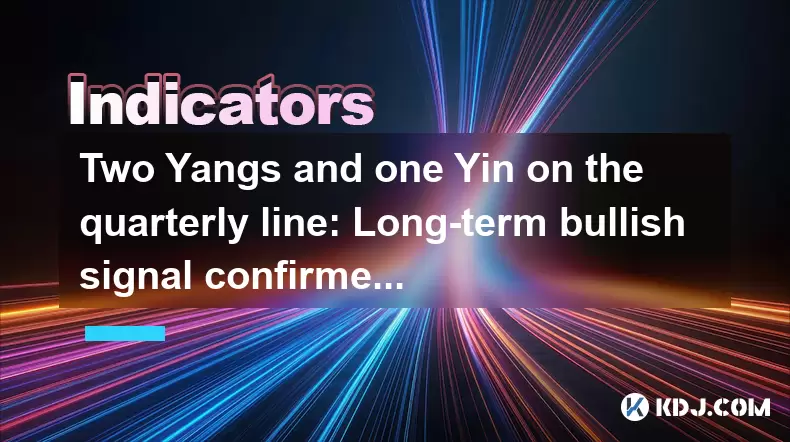
Two Yangs and one Yin on the quarterly line: Long-term bullish signal confirmed?
Jun 12,2025 at 07:00am
Understanding the 'Two Yangs and One Yin' Candlestick PatternIn technical analysis, candlestick patterns play a pivotal role in identifying potential market reversals or continuations. The 'Two Yangs and One Yin' pattern is one such formation that traders often observe on longer timeframes like the quarterly chart. This pattern consists of two bullish (...
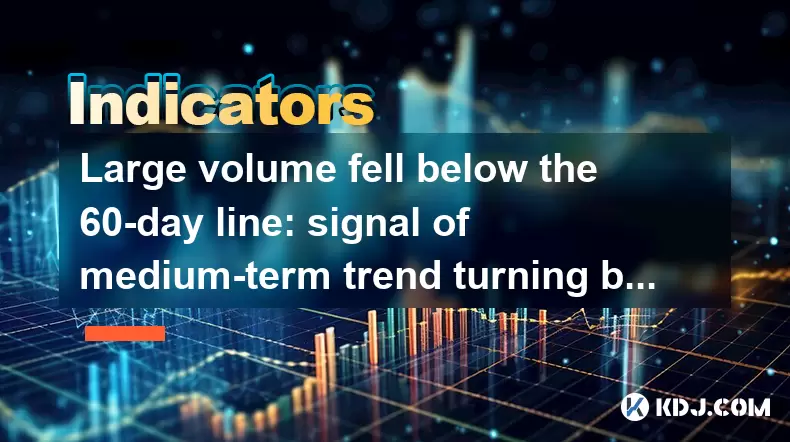
Large volume fell below the 60-day line: signal of medium-term trend turning bearish?
Jun 13,2025 at 03:42am
Understanding the 60-Day Moving Average in CryptocurrencyIn cryptocurrency trading, technical analysis plays a crucial role in predicting price movements. One of the most commonly used indicators is the 60-day moving average (MA), which smooths out price data over the last 60 days to provide traders with insights into the medium-term trend. When large v...
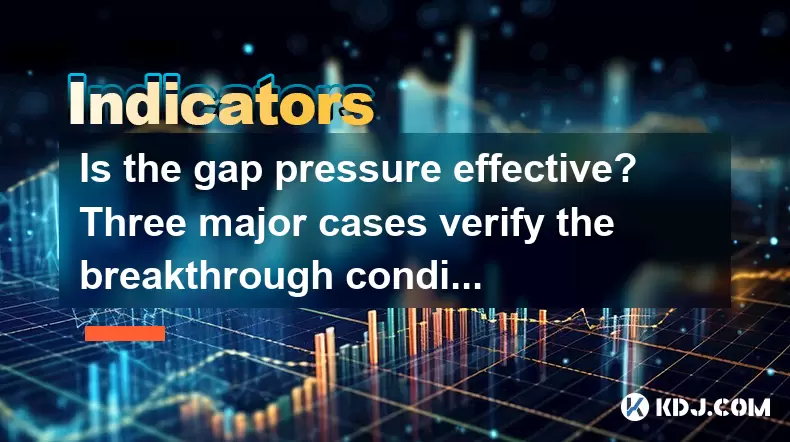
Is the gap pressure effective? Three major cases verify the breakthrough conditions
Jun 13,2025 at 04:35am
Understanding the Gap Pressure in Cryptocurrency TradingIn cryptocurrency trading, gap pressure refers to a technical analysis concept where price gaps form due to sudden market movements. These gaps often occur between the closing price of one trading session and the opening price of the next. Traders pay close attention to these gaps because they can ...
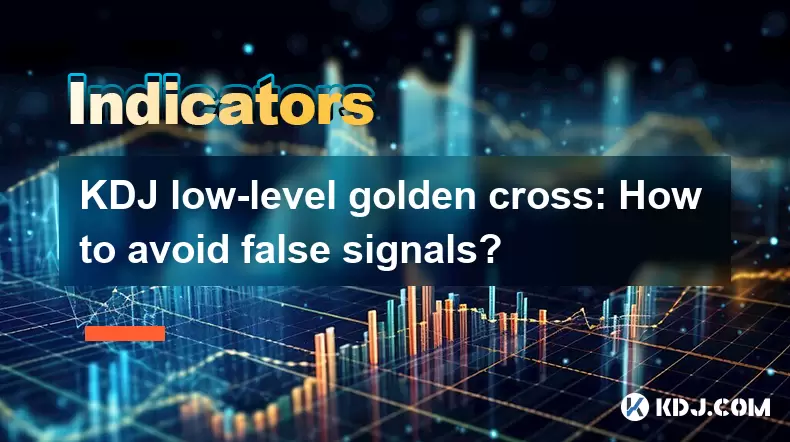
KDJ low-level golden cross: How to avoid false signals?
Jun 12,2025 at 08:21am
Understanding the KDJ IndicatorThe KDJ indicator, also known as the stochastic oscillator, is a momentum-based technical analysis tool widely used in cryptocurrency trading. It consists of three lines: the %K line (fast stochastic), the %D line (slow stochastic), and the %J line (divergence value). These lines oscillate between 0 and 100, helping trader...

Bottom-up volume stagnation: Is it accumulation or heavy selling pressure?
Jun 12,2025 at 01:42pm
What Is Bottom-Up Volume Stagnation?Bottom-up volume stagnation refers to a specific pattern observed in cryptocurrency trading charts where the price of an asset moves sideways or slightly downward, and trading volume remains consistently low over an extended period. This phenomenon is often seen after a sharp price drop or during a prolonged bear mark...
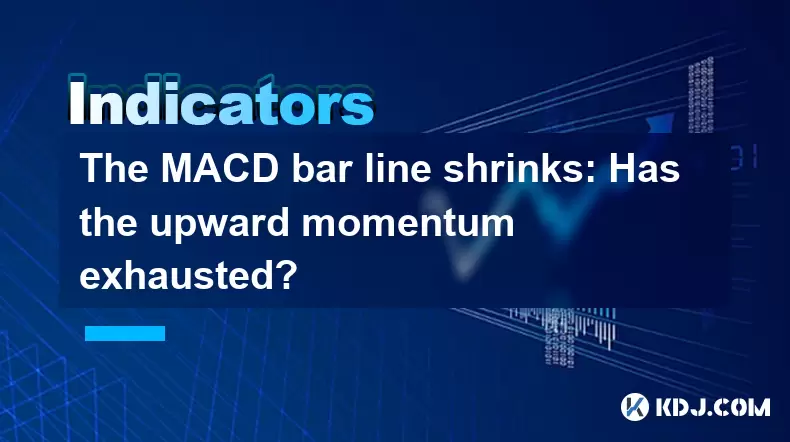
The MACD bar line shrinks: Has the upward momentum exhausted?
Jun 12,2025 at 12:49am
Understanding the MACD Bar LineThe Moving Average Convergence Divergence (MACD) is a widely used technical indicator in cryptocurrency trading. It consists of three main components: the MACD line, the signal line, and the MACD histogram (also known as the bar line). The MACD bar line represents the difference between the MACD line and the signal line. W...

Two Yangs and one Yin on the quarterly line: Long-term bullish signal confirmed?
Jun 12,2025 at 07:00am
Understanding the 'Two Yangs and One Yin' Candlestick PatternIn technical analysis, candlestick patterns play a pivotal role in identifying potential market reversals or continuations. The 'Two Yangs and One Yin' pattern is one such formation that traders often observe on longer timeframes like the quarterly chart. This pattern consists of two bullish (...

Large volume fell below the 60-day line: signal of medium-term trend turning bearish?
Jun 13,2025 at 03:42am
Understanding the 60-Day Moving Average in CryptocurrencyIn cryptocurrency trading, technical analysis plays a crucial role in predicting price movements. One of the most commonly used indicators is the 60-day moving average (MA), which smooths out price data over the last 60 days to provide traders with insights into the medium-term trend. When large v...

Is the gap pressure effective? Three major cases verify the breakthrough conditions
Jun 13,2025 at 04:35am
Understanding the Gap Pressure in Cryptocurrency TradingIn cryptocurrency trading, gap pressure refers to a technical analysis concept where price gaps form due to sudden market movements. These gaps often occur between the closing price of one trading session and the opening price of the next. Traders pay close attention to these gaps because they can ...

KDJ low-level golden cross: How to avoid false signals?
Jun 12,2025 at 08:21am
Understanding the KDJ IndicatorThe KDJ indicator, also known as the stochastic oscillator, is a momentum-based technical analysis tool widely used in cryptocurrency trading. It consists of three lines: the %K line (fast stochastic), the %D line (slow stochastic), and the %J line (divergence value). These lines oscillate between 0 and 100, helping trader...

Bottom-up volume stagnation: Is it accumulation or heavy selling pressure?
Jun 12,2025 at 01:42pm
What Is Bottom-Up Volume Stagnation?Bottom-up volume stagnation refers to a specific pattern observed in cryptocurrency trading charts where the price of an asset moves sideways or slightly downward, and trading volume remains consistently low over an extended period. This phenomenon is often seen after a sharp price drop or during a prolonged bear mark...

The MACD bar line shrinks: Has the upward momentum exhausted?
Jun 12,2025 at 12:49am
Understanding the MACD Bar LineThe Moving Average Convergence Divergence (MACD) is a widely used technical indicator in cryptocurrency trading. It consists of three main components: the MACD line, the signal line, and the MACD histogram (also known as the bar line). The MACD bar line represents the difference between the MACD line and the signal line. W...
See all articles

























































































